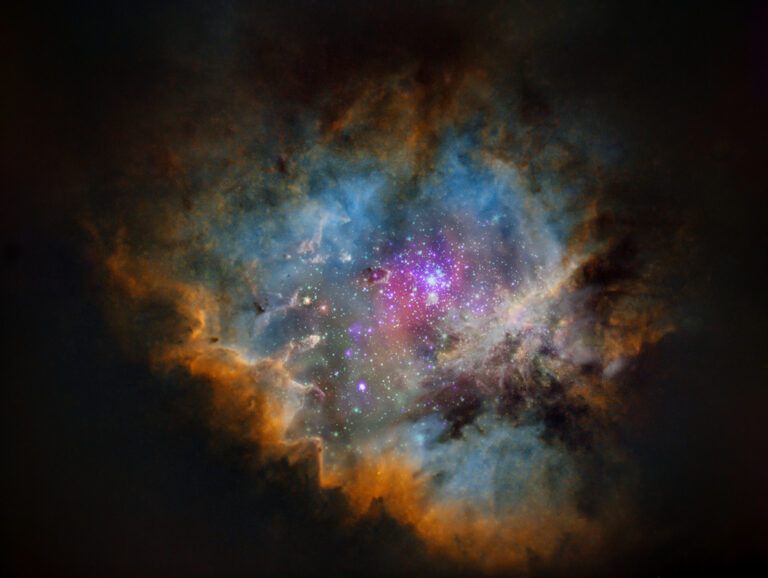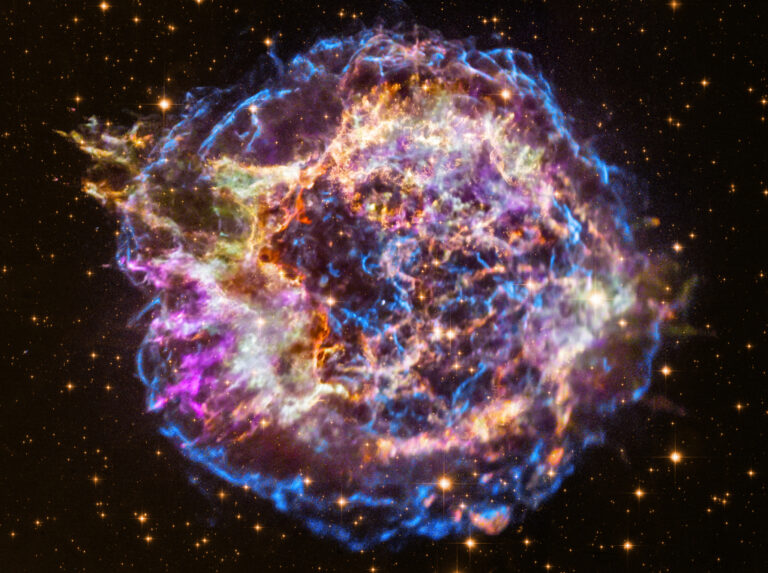UHZ1:遥远星系与黑洞
2023年11月10日 UHZ1: Distant Galaxy and Black Hole Image Credit: X-ray: NASA/CXC/SAO/Ákos Bogdán; Infrared: NASA/ESA/CSA/STScI; Image Processing: NASA/CXC/SAO/L. Frattare & K. Arcand Explanation: Dominated by dark matter, massive cluster of galaxies Abell 2744 is known to some as Pandora’s Cluster. It lies 3.5 billion light-years away toward the constellation Sculptor. Using the galaxy cluster’s enormous mass as a gravitational lens to warp spacetime and magnify even more distant objects directly behind it, astronomers have found a background galaxy, UHZ1, at a remarkable redshift of Z=10.1. That puts UHZ1 far beyond Abell 2744, at a distance of 13.2 billion light-years, seen when our universe was about 3 percent of its current age. UHZ1 is identified in the insets of this composited image combining X-rays (purple hues) from…




